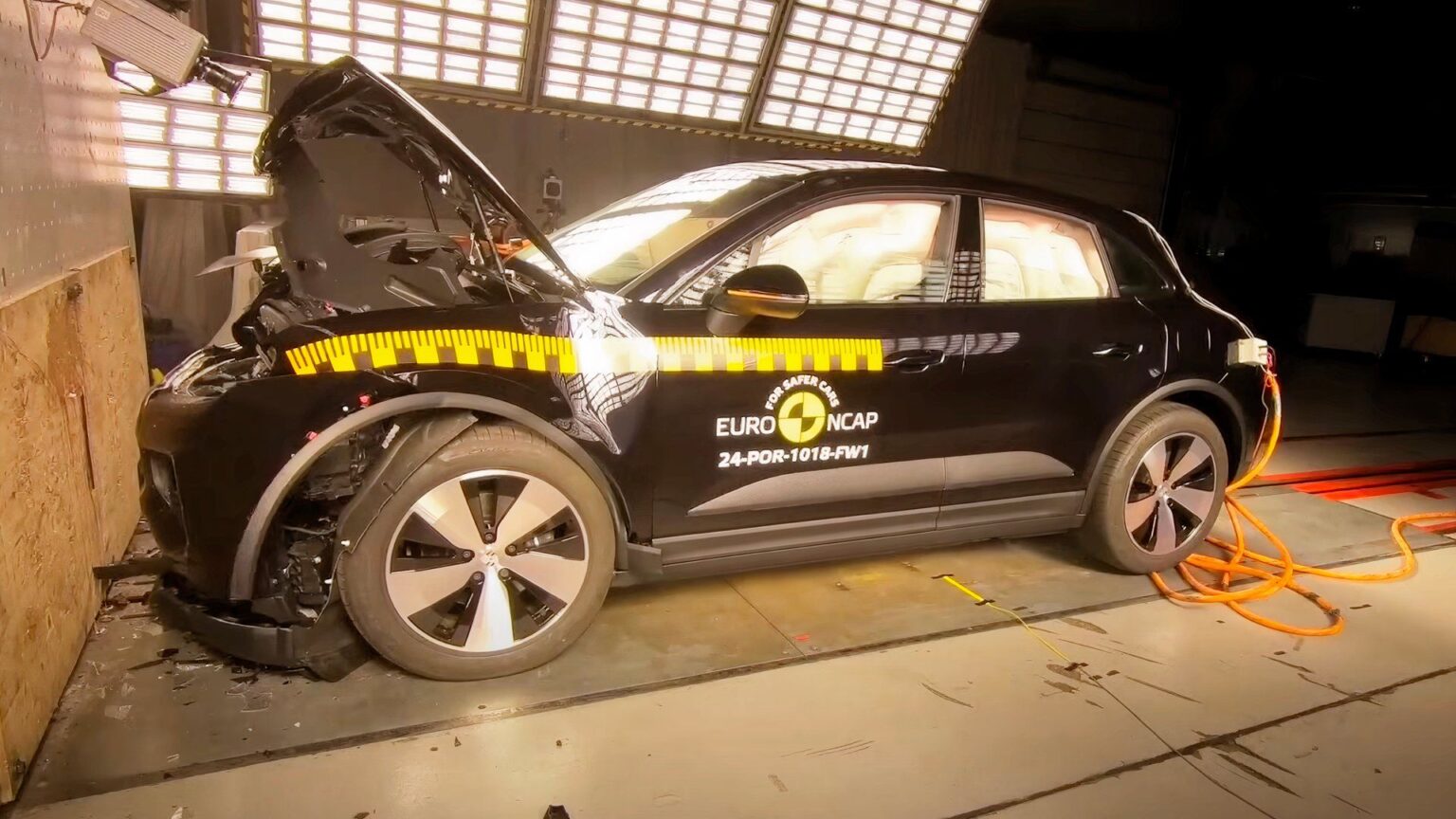You may not think of Porsche as a safety-minded brand. But as part of the giant Volkswagen Group, including Audi and VW, they benefit from that massive scale when it comes to safety research and sharing tech. The 2025 Macan Electric recently scored the highest, five-star rating in Euro NCAP testing, and Porsche has touted the complex systems they use to keep Macan drivers safe, including using multiple radar and camera sensors to widen the field of view and take in added information, enabling the Macan’s ADAS system to understand more complex hazards, such as an oncoming car overlapping the Macan’s lane while a pedestrian enters a crosswalk in the driver’s blind spot.
That’s complicated enough. What Porsche’s just announced is that they’re now using AI to study possible innovative solutions. Yes, on safety, but beyond that as well. For instance, Porsche has already trained AI systems to study existing—but also, possible future—innovations in everything from reducing chassis vibrations, to engine rattles and the structural integrity of door envelopes. The systems work with real humans through a kind of reward structure you might use when training a dog: When the AI works well, and leads to insights, it’s “rewarded.” When it fails, it’s penalized; they don’t take the bowl of kibble away, but deduct points that the AI recognizes as the “reward.”
Porsche’s AI Will Teach Humans to be Smarter
Where the real leap comes, however, is in teaching engineers working with AI to see possible next steps in innovation. Porsche discusses this in an example that’s highly complex. During a crash, knowing exactly how an airbag deploys—and what it’s doing to protect the passenger, and how it interacts with the seat belt—is profoundly difficult to un-puzzle.
Porsche is using AI to study that kind of event, which it can do far faster than prior simulations, in part because it can eliminate redundancies, which further accelerates what it learns. And, crucially, it can also run multiple simulations to look at thousands of scenarios and what are called “edge cases,” where an accident type might be unusual, but not outlandish. Likewise, earlier Porsche announced they were training their ADAS systems on accident avoidance around edge cases. In some instances, AI has cut the study of accident scenarios from 72 hours to mere seconds.
But an insight surfaced by AI only matters if engineers and designers know what the information means. So Porsche is also using what’s called “explainable AI.” This is no longer the engineer training the dog with treats—it’s the dog training its master. The AI shows the engineer what it’s learned and where in the simulation, whether that’s in a computerized crash test or in the revision of the passenger safety cell, what the results are that might lead to faster, clearer insights. In turn, that can lead to Porsche being able to role out innovations in their next models far sooner than by using conventional simulations.
TopSpeed’s Take
If all this seems very abstract, think of this in terms of design. Porsche might want to make a future cockpit look like what they revealed on their Mission X Hypercar, above. But how do you make a nearly all-glass enclosure safe? By using AI to teach you.
Or take something nearer term, like in the Porsche you drive now. Porsche is training its AI on unusual accidents, or near accidents—to learn how to prevent them. In one instance, a car’s ADAS system conflated a snowy edge of the road with the lane marking, and caused the car to swerve. Building that “edge” case into their modeling, Porsche can now, at least in theory, update the ADAS on its cars on the road right at this moment, so they no longer “see” that scenario as hazardous, resulting in a more accurate lane-keeping experience.
Porsche says AI is far more diligent than humans in studying for these anomalies, and able to analyze 10,000 kilometers of driving data in just a few minutes. That’s cut 99 percent of the time it takes a person to tediously study the data, so instead Porsche’s humans can focus on implementation. And training their actual dogs.
Read the full article here


